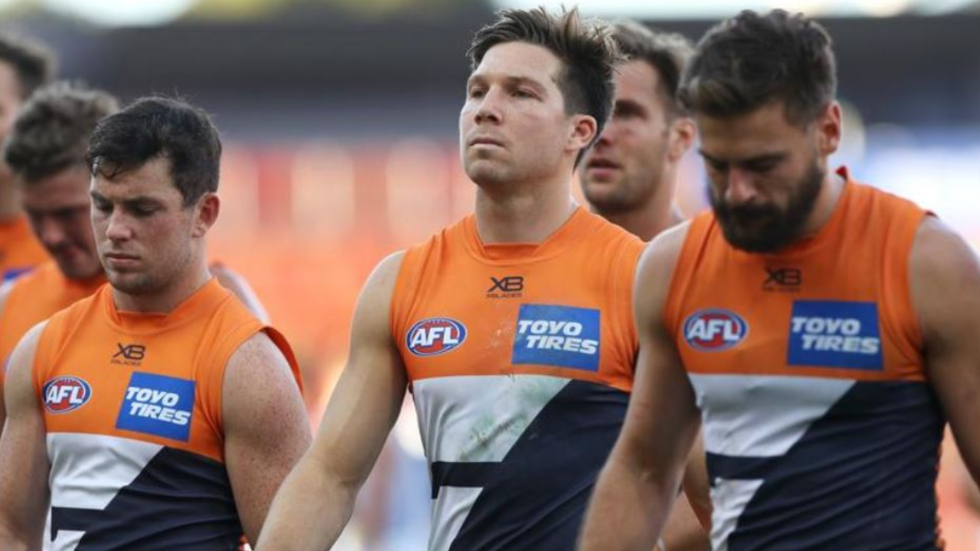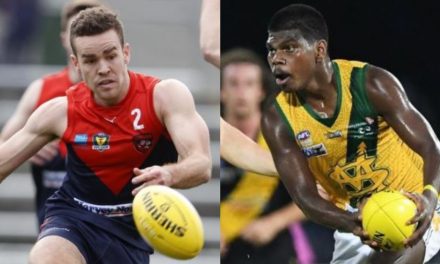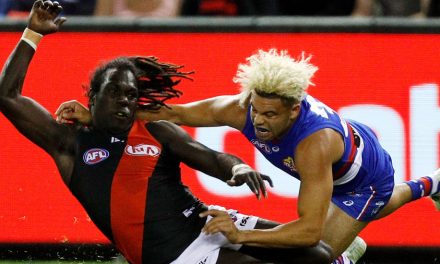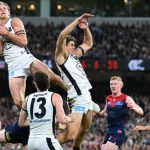GWS have had major issues with player retention over their 11-season AFL history. Photo: GETTY IMAGES
Western Sydney is the third largest economy in Australia and is home to roughly one in every 11 Australians. Over 100 different languages are spoken in the Western Sydney region of New South Wales and its population is set to reach three million by 2036.
The AFL has attempted to capitalise on this massive market with the introduction of the newest AFL club Greater Western Sydney.
In 2012, the GWS Giants entered the AFL competition as the 18th team. A team now based at Sydney Olympic Park, they have had a rollercoaster ride of success in the AFL, making a Grand Final in 2019 and winning two wooden spoons in 2012 and 2013 respectively.
However, their success in being relevant in Western Sydney is a battle for the orange and charcoal club.
They’ve had major issues in player retention over the course of their existence with multiple players every year seemingly asking for trades to other clubs, while the club have constantly drawn low crowds to their games. The question has to be asked, is this football club’s relevance fleeting?
Have your go at forecasting next season’s fortunes for GWS on the markets with a William Hill promo code.
Despite calls from such figureheads as GWS inaugural coach Kevin Sheedy and ex-AFL chief executive Andrew Demetriou that GWS is a long-term success plan, the club has failed to make a meaningful impact in the west of Sydney.
With GWS players Jacob Hopper, Tim Taranto and Bobby Hill all set to leave the Giants in the off-season, another player exodus is looming. GWS, alongside Gold Coast, are often mocked for the sheer amount of players that go through their doors and then seek trades to bigger clubs, often in Victoria.
On-field successes cannot be blamed for player retention, as GWS have still lost players while competing in finals.
Many of the players who leave the club often cite homesickness as a reason for leaving, however Devon Smith publicly called GWS’s home ground a “graveyard” ahead of his first game against his old club after being traded to Essendon.
GWS’s average home crowd attendance this season was 9219, the lowest tally in the AFL. 25,572 fans attended the Round 1 derby against their cross-town rivals Sydney at Accor Stadium, and 39,216 attended their four games at Manuka Oval at Canberra. The club signed up 30,861 members in 2022, the second-lowest figure in the AFL.
Australian Rules Football participation in the region of Western Sydney is also significantly low, with new figures showing that just one per cent of Western Sydney residents play AFL.
This comes as the Parramatta Eels, and the Western Sydney Wanderers, enjoy big crowds and high participation rates in their respective sporting codes.
The AFL has poured millions of dollars into the GWS Giants for little to no financial return, and with the league invested in the club for the long term, the numbers will need to start trending positively soon.










